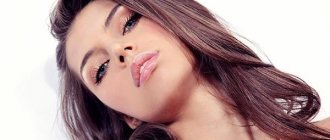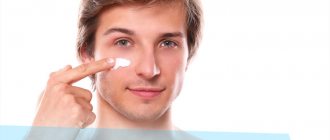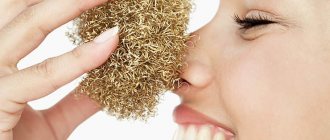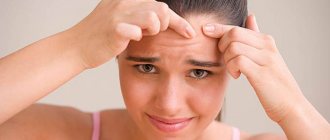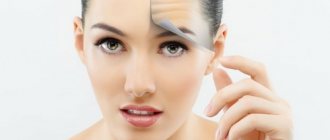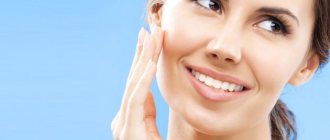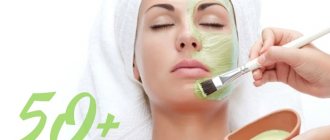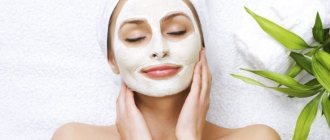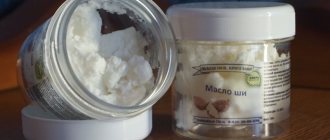What is seborrhea?
To understand what seborrheic dermatitis is, you definitely need to understand its clinic. The mechanism of the disease consists of the following points: inflammation of the epidermis, formation of scales, increased fat content. Moreover, the composition of the secretion of the sebaceous glands differs from normal. Linoleic acid is produced in small quantities, Ph shifts to the acidic side. This weakens local immunity and allows microorganisms and fungi that previously did not cause harm to become active. More often than others, a conditionally pathogenic fungus called Pityrosporum Ovale causes harm; under its influence, seborrhea on the head becomes chronic.
Another option for the development of the disease is thinning of the scalp, drying out and a significant decrease in resistance to microtrauma. This happens when the function of the sebaceous glands is abnormally low.
Seborrhea of the head develops for the following reasons:
- Decreased immunity.
- Disturbances in the functioning of the endocrine system, in particular, diabetes mellitus, hormonally active pituitary tumor, weakened ovarian function.
- Chronic stress and fatigue.
- Inflammatory diseases of the gastrointestinal tract, in which the absorption of necessary vitamins and microelements occurs in small quantities.
- Insufficient intake of nutrients from food, as well as abuse of sweets, salty and spicy foods.
- Failure to comply with basic hygiene rules (cosmetics containing a large proportion of alcohol, aggressive hair coloring, too frequent hair washing).
- Heredity (often the abnormal structure of the sebaceous glands is passed on from parents).
- Poor environmental conditions.
- Oncological pathologies of the testicles in men.
There is a conditionally benign variant of the course of the disease. It occurs due to natural hormonal changes.
Signs of seborrheic dermatitis are observed in a child entering puberty, in pregnant women, as well as in women at the beginning of menopause. All this is transitory in nature.
What are the causes of inflammation on the scalp?
Conventionally, the causes leading to the appearance of inflammation of the skin on the head are usually divided into local and general. Local ones directly affect the skin, while internal ones are caused by any abnormalities in the functioning of internal organs and systems.
Some local processes become possible only when certain internal prerequisites appear. For example, dandruff. It would seem that this problem can be attributed to a local lesion, because its appearance is caused by a fungus or dysfunction of the sebaceous glands. But provocateurs can be metabolic disorders, as well as diseases of the digestive system or an incorrectly selected diet.
Local processes
This may include:
- dandruff;
- hyperkeratosis;
- seborrhea;
- allergic reactions;
- furunculosis;
- mycosis.
Dandruff manifests itself through the appearance of dead scales of the epidermis, forming a white crust. Hyperkeratosis is characterized by the appearance of local thickening of the skin. They have an uneven, rough structure, accompanied by a feeling of dryness, dandruff, and diffuse alopecia. Such locations on the scalp may be only part of the general hyperkeratosis, in which similar symptoms are present on all skin integuments.
With seborrhea, the order of the sebaceous glands is disrupted. Excess produced fat leads to greasy hair and skin, oily dandruff. Inflammations occur on the head, the surface becomes irritated. In addition, furunculosis may develop.
If the secretion of the sebaceous glands becomes difficult, dry seborrhea begins to develop. It is characterized by insufficient hydration of the scalp, tightness, and increased sensitivity. Fine dry dandruff appears.
If you do not start fighting seborrhea in time, it can transform into seborrheic dermatitis. In this case, areas of weeping, blisters and crusts appear on the surface of the skin.
Damage caused by allergens can manifest itself in the form of swelling, inflammation, and various rashes that are accompanied by severe itching. Painful changes can be caused by various cosmetics/chemicals, poor diet, and environmental problems.
Furunculosis is a skin disease caused by staphylococcus bacteria. Its characteristic manifestation is inflammation of the sebaceous glands with further formation of a boil.
Mycosis belongs to the group of fungal diseases. Infected areas become rough, the skin turns pink or gray and peels off. Hair in affected areas loses its natural structure and begins to fall out.
It is possible that the skin on the head has become inflamed as a result of some environmental influences. For example, frostbite, burns of both thermal and chemical nature.
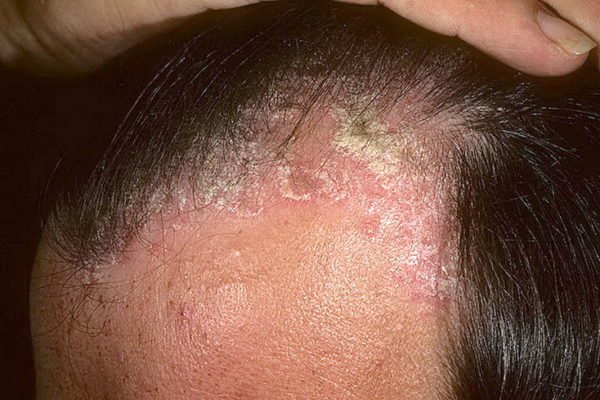
General processes
The list includes:
- diseases of the immune system: lupus erythematosus, scleroderma and a number of others;
- general skin diseases (for example, dermatitis, psoriasis and others);
- various disorders of the endocrine system, in particular the thyroid gland;
- blood diseases;
- metabolic imbalance.
In most cases, when the scalp begins to become inflamed, the hair also begins to become damaged. This fact is explained by a disruption in the blood supply to the hair follicles, and, as a result, a nutritional deficiency occurs. Thus, treatment started on time helps maintain healthy hair.
Symptoms
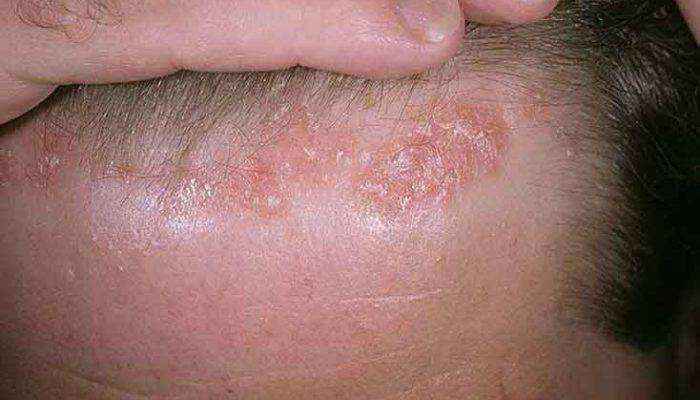
All symptoms directly depend on the type of sebum secretion. The most common form is oily seborrhea. The fat can be thick or liquid in consistency, and the skin itself resembles the peel of an orange. The main indicator is thick dandruff in large quantities. Skin flakes separate at an accelerated pace, stick together and form flakes. Hair falls out, becomes thin, and looks like fluff.
Dry seborrhea, on the contrary, is due to a clear lack of fat in the pores. Clear signs of flaking are visible, dandruff is very fine, unlike oily seborrhea. Red or pink spots form and unbearable itching occurs. Immediately after washing your hair, a feeling of tightness remains for several hours. Patients often note a burning sensation when coming into contact with aggressive cosmetics and hair dyes. The structure of the hair also suffers: thinning and separation of the hair shaft occurs, and the hair “splits.”
When oily and dry dermatitis are combined on different parts of the head, we are talking about a mixed form of the disease. How to treat seborrhea with a mixed course is a big question for every doctor.
In cases of infection, the dermatologist diagnoses seborrheic eczema or dermatitis. Treatment of these pathologies requires a special approach.
This pathology is not uncommon in infants. After 3 months of age, the sebaceous glands begin to actively secrete. Outwardly, it looks like this: on the child’s head, usually in the upper part near the crown, lesions of various diameters form. These areas are covered with dense crusts and greasy scales. Popularly it is called lep or gneiss.
Parents must remember that the disease cannot be predicted or prevented. Adequate care does not guarantee the absence of disease. As soon as the first manifestations are visible, you need to treat the affected areas with hypoallergenic oil, after an hour, bathe the baby, and then very carefully comb the head. Your doctor should tell you how to treat seborrhea in a baby.
Pathogenesis of the disease
Seborrheic dermatitis does not only exist in dry form. There is also oily and mixed. This classification depends on the consistency of sebum, its quantity and visible signs of the disease.
With dry seborrhea of the scalp, sebum becomes very thick and viscous. This makes it difficult for it to reach the surface of the skin. Traffic jams may occur in the sebaceous glands, resulting in inflammation. It moves to the surface of the skin, spreading there. Peeling and redness can appear on the face, neck and affect larger areas of the body.
Important! Many people think that their skin is flaky due to lack of moisture, so they start using products to moisturize their scalp and hair. As a result, the situation is only getting worse.
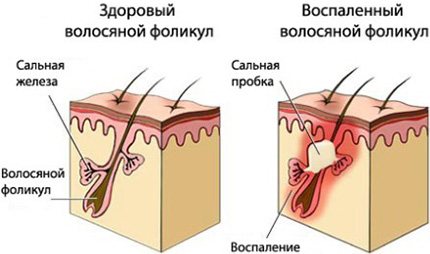
Visually, it seems that the sebaceous glands are not producing enough sebum. In fact, its consistency becomes too thick, so it cannot come out in sufficient quantities, the glands become clogged.
Treatment of dry seborrhea of the scalp must begin with determining the cause of the disease. Therefore, it is imperative to consult a qualified dermatologist.
Traditional treatment for scalp seborrhea
A rather difficult dilemma is how to cure seborrhea on the head using modern drugs. Moreover, it is important not to cause even more harm. Based on the reasons, first of all you need to get rid of the underlying pathology, and only then block the symptoms of seborrhea. It is recommended to consult an endocrinologist, gynecologist or urologist, neurologist and trichologist (dermatologist). The doctor will prescribe the necessary examinations and treatment. Taking medications on your own initiative or on the advice of friends is highly discouraged.
Treatment of seborrhea of the head is best started with activities that are feasible for each person - proper nutrition. It is not recommended to use:
- Sweets in any form: cakes, pastries, sweets, honey, jam, as carbohydrates contribute to the nutrition and proliferation of fungi.
- Sweet baked goods.
- Semolina porridge, pasta.
- Fast food, spicy, salty dishes (negatively affect absorption in the intestine).
- Fatty meat and lard.
- Fresh or boiled fruits and vegetables.
- Dietary meat.
- Fermented milk products (whole milk is contraindicated).
- Cereals.
- Drink at least 1.5–2 liters of fluid per day to remove toxins from the body.
It is important to form the right habits so that after the symptoms disappear, they do not provoke a rapid return.
Ointments and tablets
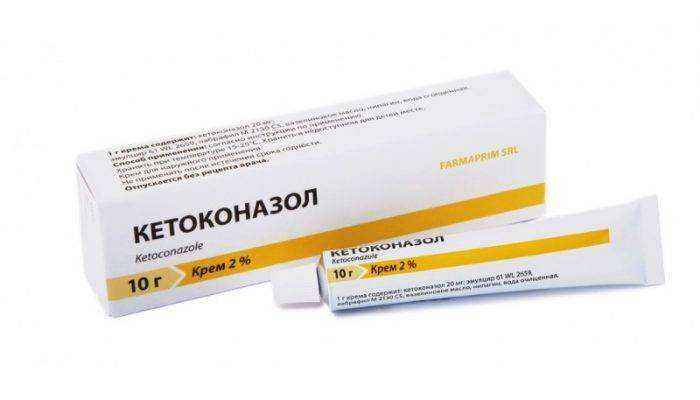
Treatment of seborrheic dermatitis on the head with pharmaceutical drugs is usually quite long-term. The average duration is 2 months. After which the doctor prescribes repeated examinations and decides whether to continue or discontinue therapy.
- Antifungal drugs designed to reduce the activity or destroy fungi (Bifonazole, Ketoconazole). May be included in ointments.
- Vitamins in the form of complexes, especially for hair loss or simply to saturate the body (especially when the intake is low from food).
- Brewer's yeast tablets - prevent brittle hair and nails.
- Kombutek, Pyrogenal - biogenic medicines to improve blood circulation and accelerate metabolism in tissues.
- Shampoos with various compositions.
Ointments are rightfully presented as the best and most common remedies for seborrheic dermatitis on the head.
Salicylic ointment has an alcohol base. Its main task is to block the secretion of the sebaceous glands. Indicated for oily seborrhea, it has a drying effect. It should be used three times a day. Often causes burning and rash on the skin. Prohibited for use by children under 16 years of age.
Mycozoral is a fungal remedy based on ketoconazole. In addition, it may be active against some bacteria. Has a quick effect. Apply for a month, usually 2 times a day. Mycozoral has virtually no contraindications and is allowed even for pregnant women. Contraindicated only in case of wounded skin lesions or allergies to components.
One of the best antiseptic medicines for topical use is Zinc ointment. Strengthens natural defense mechanisms. Used twice a week. It is acceptable to use Zinc ointment when caring for babies.
Remedy for dry seborrhea – Sulfur ointment. Apply before bed, daily, repeat throughout the week. This is followed by a break for 1 day and the head is treated with anti-fungal shampoo.
Mixed seborrhea can be treated with Tar ointment. Apply once a week, duration up to 3 months. After application, 10 minutes later you can wash your hair without shampoo. Actively fights itching and flaking, alleviates the patient's condition.
It is difficult to imagine treating scalp seborrhea without shampoos. The following options are available:
Their medicinal properties are varied and determined by the presence of active substances:
With their help, the symptoms subside quite easily, and the treatment of seborrheic dermatitis of the scalp proceeds faster. The number of fungi decreases, they will no longer be able to receive nutrients and reproduce. Sebum is secreted in smaller quantities, and the scales are mechanically washed away, which creates a favorable visual impression and helps to avoid psychological problems.
Drug treatment
Treatment of seborrhea of the head begins with a retinol course. Its duration is about 2 months. It is based on the following medications:
- B vitamins;
- nicotinic and ascorbic acid;
- tocopherol with biotin.

Self-medication is strictly prohibited, as this can lead to the disease becoming chronic or complicated by a bacterial infection. On the positive side, sulfur ointment 10% has proven itself. It not only helps to moisturize the skin, but also relieves the negative symptoms of the disease.
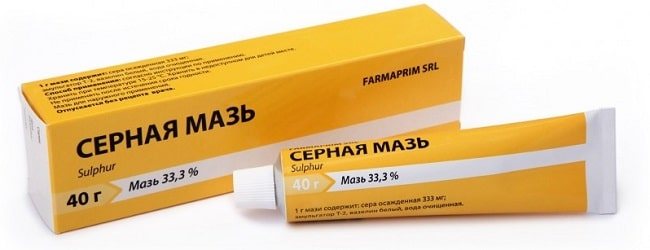
The drug is used as follows:
- hair needs to be divided into thin strands;
- over the resulting partings, it is necessary to rub the ointment in for 5 minutes;
- the duration of treatment is 8 days;
- on the 9th day you need to take a break (do not scratch or wash your hair);
- on the 10th day, you need to wash your hair with boiled water (you need to use a special medicated shampoo);
- on the 11th day they are treated with a solution of boric acid, the preparation of which requires mixing 2 tablespoons of powder in 150 ml of boiled water;
- After the resulting solution, you need to treat your hair and wrap it in a towel overnight. This procedure is carried out for another 2 evenings, after which the hair is washed again with shampoo. The general treatment cycle can be repeated three times.
Apilak, Persalan and Medis ointments showed excellent results in the fight against seborrhea. Seborrheic dermatitis is also eliminated using traditional methods.
Folk remedies
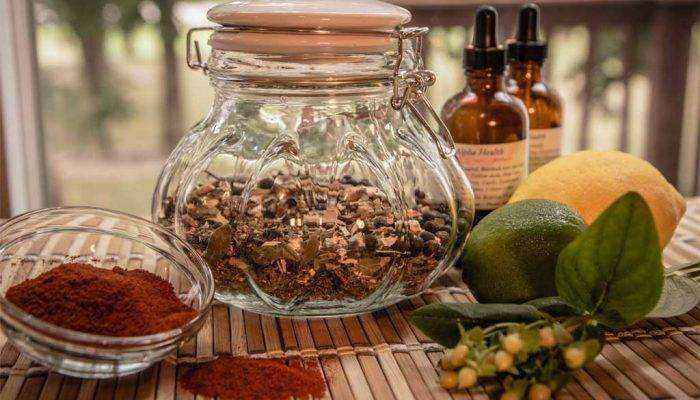
The actual question is how to get rid of seborrhea on the head using traditional medicine. The main thing to remember: treatment at home is only part of complex therapy. Before you start using anything, it is important to be examined and get an accurate diagnosis, otherwise you can cause irreparable harm, including irreversible baldness.
Examples of simple recipes for oily seborrhea:
- Onion juice and boiled chilled water are mixed in a 1:2 ratio. Rub in the composition every time before washing your hair. Course duration is 4 months.
- Calendula helps well against seborrhea of the scalp. You need to pour 1 tablespoon of flowers with 2 cups of boiling water. Leave for 30 minutes. Rub in every day. Prevents hair loss and relieves itching.
- Hair mask: 2 egg yolks, 1 tablespoon olive oil, lemon juice (1/2 lemon). The ingredients must be mixed and rubbed into the scalp for 40 minutes. Wrap up warmly. Wash off with simple shampoo as during normal washing. Repeat the procedure every 3 days.
- Seborrhea of the scalp can be treated with oak bark. Pour the dry substance into boiling water at a ratio of 1:5, boil for another 20 minutes, add honey. Use 2 times a week for 2 months.
- Propolis extract has a medicinal effect. It is applied to the scalp every other day, forms a film that needs to be removed in the morning (preferably using a swab with alcohol). Carry out 30 procedures, followed by a 3-month break.
You can fight dry seborrhea using the following means:
- Grind dry nettle leaves in the amount of 2 tablespoons, add 300 ml of boiling water, wait 2 hours. Apply every day.
- Seborrheic dermatitis on the head can also be treated with calendula. It must be mixed in a 1:1 ratio with castor oil and rubbed into the hair every other day.
- Mix natural henna powder with water and rich cream (1:2:7). It is acceptable to treat the scalp at home twice a week. The course consists of 12 procedures.
- Pour boiling water over dry burdock roots at the rate of 300 ml per 2 tablespoons of dry matter. Boil, strain, add 50 g of melted fat, preferably pork fat. Boil in a water bath for another 2 hours. Rub in 2 times a week for 3 months.
Knowing the causes of the disease, symptoms, and medications for the treatment of seborrhea of the scalp, you can easily overcome this unpleasant condition. After undergoing a consultation and receiving instructions from the attending physician on how to cure seborrheic dermatitis, each person will find something that will help him.
According to statistics, 8 out of 10 people have various kinds of problems associated with poor hair or scalp condition. And this is a rather deplorable trend, since hair is not only a kind of calling card of a person who creates his external image.
They also serve as a “barometer” of health, by which the general physical condition of their owner is judged.
What do the accompanying symptoms indicate?
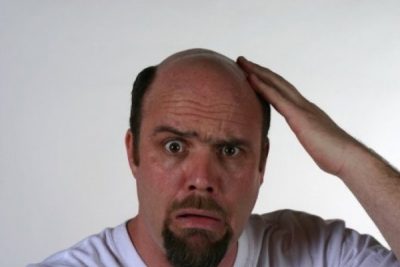
At the same time, the hair itself gradually moves to the surface of the scalp over the course of 3 months, which makes the process of hair loss absolutely imperceptible.
If baldness is accompanied by unpleasant pain symptoms, then the cause should be sought in the skin, because tactile receptors responsible for the sense of touch are located in it, and not in the hairs.
The causes of pain during hair loss are most often associated with damage to the scalp, which can be caused by mechanical stress or disease. Hair loss pain that is not associated with disease can occur as a result of such adverse effects as:
- Tight hairstyles, backcombing, various salon braids: afro braids, zizi.
- Thermal burns to the skin when styling with a hairdryer or electric curling irons.
- Chemical burns from ammonia dyes, hydrogen peroxide during dyeing, bleaching, and perming hair.
- Sunburn or frostbite on the scalp in hot or cold weather.
REFERENCE! Sometimes painful sensations can be psychosomatic, they are especially pronounced in women. A woman, seeing the amount of hair she loses every day, becomes so upset that her worries provoke attacks of headaches. Against the background of mental experiences, other psychosomatic symptoms may develop, such as itching or burning.
Classification of hair diseases
A medical field that specializes in the study of the development of pathological processes in the hair and scalp is called trichology. Currently, this section of cosmetology focuses on the timely detection of diseases and the development of new methods to combat them.
Specialists in this field (trichologists) classified hair diseases, as a result of which two categories appeared:
- hair diseases;
- scalp diseases.
Each case can be individual, and of course, this division does not mean that diseases cannot collectively have a general clinical character. Considering the etiology, it means finding the true source of the development of the disease, as a solution to the existing problem. The root cause can be both internal and external factors:
- polluted air;
- dry room;
- low quality water and hair care products;
- hormonal imbalance;
- disruption of internal organs;
- failure to comply with hygiene standards;
- contact of hair and scalp with infected sources (comb, nails, etc.).
Diseases of the hair and scalp can also be divided into the following 4 categories based on their development:
- infectious factor affecting hair and scalp - pediculosis (head lice), trichophytosis (ringworm), microsporia (fungal infection) and others;
- factor associated with dysfunction of the sebaceous glands - seborrhea, dandruff ;
- factor of damage to the hair shaft by mechanical, thermal and chemical type - split ends of hair ;
- pathological factor of hair loss: disorders of various components of the follicle or age criterion - alopecia .
Treatment recommendations
The sooner you notice the symptoms of a scalp disease, the easier it will be for you to get rid of it. Therefore, the primary recommendation is to carefully monitor your health.
How to treat dry seborrhea? Only a doctor should answer this question. No amateur activities or self-medication. Even folk remedies or medications tested on your friends may many times turn out to be useless or harmful specifically in your case.
For dry seborrhea, treatment is prescribed individually after visiting a specialist. Therefore, we can only give you general recommendations and rules that should be followed for seborrheic dermatitis.
- It is necessary to determine whether seborrheic dermatitis is the underlying disease, or whether it accompanies another, more serious disease.
- The best and most correct treatment for dry seborrhea is an integrated approach to the problem.
- If you do not cure the underlying problem, but only fight the symptoms of seborrhea, relapses will become your constant companion.
- To cure scalp problems, the doctor must prescribe the necessary medications to restore the functioning of the nervous system. Very often, seborrhea manifests itself precisely against the background of stress, depression or nervous breakdowns.
- Be sure to focus your efforts on combating concomitant diseases that accompany or have caused seborrheic dermatitis. First of all, you need to normalize the state of hormones, get rid of excess weight and correct the functioning of the gastrointestinal tract.
- Follow your diet. Seborrheic dermatitis can be difficult to treat without making dietary changes. This is especially true for those people who are accustomed to eating fatty, salty and smoked foods, as well as drinking coffee, alcoholic beverages and abusing tobacco products. The main emphasis is on fruits, vegetables and cereals. Only low-fat varieties of meat are allowed.
- Sign up for treatments such as ozone therapy and cryotherapy. With dry seborrhea, they are very helpful in coping with the problem and suppressing the pathological activity of the fungus.
- Use shampoo. Only the shampoo must be medicinal. You should also know that shampoo against seborrheic dermatitis is rarely universal. There is a shampoo against both oily and dry seborrhea. It is useless to use shampoo for oily type of disease. Therapeutic shampoos aimed at combating the dry type of seborrheic dermatitis should include tar, sulfur, ketoconazole and salicylic acid. Zinc medicated shampoos cannot be used because they dry out the skin and are used only in the treatment of oily seborrheic dermatitis.
- To improve the condition of your hair and scalp, be sure to try to provide yourself with at least minimal physical activity. Simple walks will be enough.
- Focus on taking vitamins. They can be prescribed by a doctor in the form of medications, or you can get the missing amount of microelements and vitamins through food. The most relevant for dry seborrheic dermatitis are vitamins of groups A, B, E and D. They normalize the condition of the hair, improve the functioning of the epidermis and promote recovery.
Prevention measures
When seborrheic dermatitis occurs, many manage to overcome this unpleasant scalp disease. But there is always a risk of relapse of dry seborrhea. To prevent seborrheic dermatitis from bothering you, you need to follow some preventive rules.
- Practice basic personal hygiene. Seborrheic dermatitis can be provoked by using someone else's combs or washing your hair very rarely;
- To care for your head and hair, use special pharmaceutical products. They are used only for the prevention of dry seborrheic dermatitis, therefore they are applied in between the use of conventional cosmetic shampoos literally once a week;
- Even cosmetic products for scalp and hair care are best used of high quality. Dry seborrhea can be caused by low-grade shampoos and gels;
- Accustom yourself to vitamin therapy courses. This is especially useful for those who have already experienced dry seborrheic dermatitis. The course is required every 3-5 months. Usually includes the use of products such as Duovit or Vitrum;
- Change your diet. It is food that becomes a common culprit of dry seborrheic dermatitis. Eat not only tasty, but also healthy;
- Drink more water. Dry seborrhea can be prevented if you provide the body with the necessary amount of fluid.
Dry seborrheic dermatitis is not a terrible or very dangerous disease. But complex and advanced forms of seborrhea can provoke unpleasant consequences. Therefore, it is necessary to treat dry seborrhea.
Principles of treatment of hair and scalp diseases
Any disease is easier to prevent than to treat! Therefore, you should not let your hair grow to a lifeless state, and even more so if the scalp bothers its owner with constant itching.
Under no circumstances should you endure and postpone a visit to a specialist until better times. Remember, hair may never forgive such a stupid attitude towards it and will definitely respond with a lot of unpleasant moments.
Treatment mainly consists of eliminating the true causes of the disease. And the use of preventive measures and folk recipes at home will help to record the positive results obtained for a long time.
We list some of the simplest recommendations for hair and scalp care that will provide complete protection from external adverse factors:
- Never use regular toilet soap to wash your hair, use only special products.
- Try to periodically change the brand of shampoo, which should be done strictly taking into account the type and characteristics of the hair.
- Comb your hair daily morning and evening to improve blood circulation in your hair.
- Massage the hair roots with your fingertips for about 5-10 minutes a day to improve nutrition of the hair follicles.
- Follow the frequency of washing your hair according to its type: oily hair more often, dry hair less often.
- Drying hair using electrical appliances is not advisable.
- Carefully select hair care products, especially hair dyes, which may cause an allergic reaction. To do this, be sure to test the drug according to the included instructions.
Oily and dry dandruff. Differences and Treatments
As soon as you notice tiny flakes on your hair, you immediately reach for the anti-dandruff shampoo. This is mistake. Unfortunately, dandruff occurs for many reasons and each of them has different treatments. How to recognize which dandruff is bothering you and how to choose the right treatment?
Dandruff is a serious problem
Dandruff is a problem that many adults and teenagers face. The immediate cause of its formation is the action of fungi Pityrosporum ovale, which live on the skin of any person. Most often, they do not cause any harm at all, but under suitable conditions they begin to multiply intensively. This is how dandruff appears on the scalp, that is, tiny, white or yellow scales of the epidermis.
The factor causing the problem is, first of all, poorly selected cosmetics for hair care, but not only. Poor diet, excessive stress, hats that cause overheating of the scalp and excessive sugar consumption may also be the cause.
Dry dandruff - how to recognize and treat it
Dry dandruff is the most common type of dandruff and is not accompanied by seborrhea; on the contrary, it is simply excessively dry, flaky skin. The flakes from such dandruff are white or yellowish, most often small and very noticeable in the parting. It becomes even larger after combing.
If you have dry dandruff, change your hair care products immediately. The cause is the most common bacteria on the scalp or simply dry skin, so the head should be washed with a mild shampoo that has an antibacterial effect. Since dry dandruff is always accompanied by redness and itching, it is worth having a soothing cosmetic product such as D-panthenol. Thanks to this, you will quickly regain your comfort, because minor inflammation on the scalp will heal immediately.
Oily dandruff - recognition and treatment
The cause of oily dandruff is seborrhea in the scalp. The fungi Pityrosporum ovale, in this case, have excellent conditions for development, so they multiply very quickly. This kind of dandruff is more unpleasant. It has the form of yellowish large flakes that stick to the scalp under the influence of sebum or clump together. All this is accompanied by severe discomfort, itching and redness.
Oily dandruff can have disastrous effects on the entire scalp, causing inflammation and, if left untreated, hair loss. Therefore, you should purchase a specialized drug from a pharmacy as quickly as possible. Pharmaceris H-Purin Oily Shampoo with natural antiseptic oils (thyme and tea tree), as well as manuka extract, can be very helpful. The shampoo refreshes, has an antifungal effect and restores the secretion of the sebaceous glands.
If you have oily dandruff, you should also consider changing your diet and radically eliminating sugar from the menu, including from fruits.
Fighting baldness with traditional methods
Alopecia, as the process of baldness is called in medical circles, is most often caused by internal causes, which complicates its treatment. Therefore, alternative medicine in this case may not bring good and lasting results. The action of folk recipes in solving this case is based on the following macros:
- nutrition of hair and scalp with microelements;
- providing anti-inflammatory effects;
- improving blood supply directly to the scalp.
Activation of blood circulation and nutrition is provided using the following methods:
- Rub the mixture into the scalp - 1 part each of birch sap, garlic, aloe juice, honey, chicken yolk. Walk with the applied composition for 1.5-2 hours and wash your hair, rinsing your hair with strong birch infusion.
- Vanga's recipe: rub mixture consisting of 1 egg, 2 tbsp. spoons of castor oil, 1 teaspoon of table vinegar, 1 teaspoon of glycerin. After applying the mask, wrap your head with a warm towel.
- Treatment method with propolis: pour 4 grams of purified propolis into a glass of 40% alcohol, close tightly and shake. Massage the hair roots with the resulting solution.
- Recipe with table salt . After washing your hair with warm water, rub salt into the roots, massaging for about 15 minutes, then rinse your hair. Repeat this procedure up to 6 times a day.
- Onion tincture for rubbing: mix 1 part onion juice with 2 parts vodka. The course of treatment lasts up to 3 months, the procedure is applied before washing your hair.
- It is very useful to wash your hair to enhance hair growth with a decoction of linden blossom : 8 tbsp. spoon in half a liter of water and boil for 20 minutes.
Folk recipes against split ends
Brittle and dry hair is also a disease that trichologists call nodular trichoclasia. And if many representatives of the fair sex naively think that they can be overcome with a regular haircut, then this is not so.
In this case, the causative factors are various mechanical damage, unfavorable climatic conditions, and even poorly chosen hair dye.
At home, you can not only help your hair get stronger, but also restore it to its former luxury and thickness with the help of simple grandmother’s recipes:
- A mask of honey, egg yolk, onion juice and vitamin A in the form of oil. All ingredients in equal parts are thoroughly mixed and applied to clean hair.
- Directly, only the egg yolk itself has a beneficial effect on eliminating split ends - the mixture of beaten yolk is evenly distributed over wet hair and massaged until foam forms. The head should be washed off with a contrast shower and rinsed with herbal infusion.
- Aloe leaf balm has nutritional properties. To do this, they should be crushed and filled with chilled boiled water, strained and used as intended.
- Burdock root mask - you will need 10-15 grams of pre-crushed roots, brewed with boiling water, cook the mixture over low heat for 15 minutes, then let it steep for another 5-10 minutes.
Treatment of dandruff with folk remedies
According to statistics, the most common cause of itching of the scalp is dandruff. It is this that causes not only irritation of the scalp, but also a visible nuisance - the release of white flakes of skin on clothes. Treatment with non-traditional methods in this case includes:
- Washing your hair with special herbal decoctions to strengthen hair growth and reduce sebum secretion from the scalp. To prepare, use 1 tbsp. a spoonful of dry herbs (sage leaves, yarrow, St. John's wort, mint, chamomile flowers) per 1 liter of water, prepare a solution in a water bath.
- Using homemade masks, for example, just mix 3 tbsp. spoons of olive oil and the juice of one medium lemon. This mask is effective if left overnight and washed off in the morning.
- Rubbing special products into the scalp: 10 parts vodka mixed with 1 part cinchona peel, add 1 teaspoon of castor oil and 3 drops of rose oil.
- Strict adherence to certain hygiene standards.
- Balanced diet: minimize the consumption of animal fats, salt, carbohydrate foods, alcohol; fruits, vegetables, and dairy products are welcome.
Remember that diseases of the hair and scalp can pass without symptoms and develop for years, so monitor their health and devote maximum time to caring for them every day.
Itching of the scalp is the first signal of a particular skin problem, which should not be ignored. Over time, the itching may be accompanied by the appearance of inflamed red rashes or spots, wounds, and hair loss. An examination and diagnosis of problems is carried out by a trichologist or dermatologist. After making a diagnosis, the specialist prescribes appropriate treatment.
An unpleasant symptom can be eliminated with folk remedies. If scalp itching occurs, treatment at home quickly restores normal skin condition. But there are situations when it is impossible to do without drug treatment. It all depends on the reasons causing itching.
Hair treatment with oils
Hair treatment with oils has become very popular. I would like to note a unique product made from the fruits of an evergreen shrub - jojoba oil. It is actually a liquid wax, but the first name is the most common. Jojoba oil is rich in vitamin E, which is essential for the scalp and hair. Add a couple of drops of oil to your shampoo or to your comb before combing. You can prepare a mask from part jojoba oil and part almond oil, which is rubbed in with massage movements.
If you don’t want to make mixtures yourself, there are ready-made professional cosmetics products. Bulgarian manufacturers offer sprays based on olive, rose, and lavender oils. Myrrh oil is good for dry hair, lemon oil stimulates the sebaceous glands, and tea tree oil has a healing effect for scalp diseases.
Hair treatment with oils is carried out in the following sequence:
- applying the product;
- scalp massage;
- putting on a cellophane cap;
- Leave the oil on your head for up to an hour.
Hair treatment with burdock oil
Hair treatment with burdock oil is contraindicated for people with diabetes, as it can lower blood sugar levels.
Burdock oil is actively rubbed into the scalp, for which it is preheated. Leave for 40 minutes, wrapped in a cellophane cap and towel. In this way, the hair is strengthened and its growth is activated.
Hair treatment with burdock oil according to traditional medicine recipes:
- for baldness – burdock oil, lemon juice, honey 2 tbsp. mix, heat in a water bath. Add 2 yolks to the cooled mixture, spread over the scalp and leave for an hour;
- for growth and strengthening - burdock oil 3 tbsp, cocoa 1 tsp, two yolks. Apply to the hair roots, wrap for an hour, and wash off with shampoo.
Hair treatment with olive oil
Hair treatment with olive oil has come down to this day from Ancient Greece. The oil is suitable for any hair type, contains vitamin E, adds shine, softens, nourishes and strengthens.
Olive oil is heated in a water bath, applied to the roots and left for about an hour. The following mask will help ensure thickness and enhance hair growth: a tablespoon of olive oil and a teaspoon of lemon juice are slightly heated and distributed over the hair. The head is wrapped in a towel, under which a cellophane cap is put on. The mask can be kept for up to 3 hours.
Treatment of hair with olive oil for split ends, dandruff or dry skin: half a cup of honey is mixed with a quarter of heated olive oil. The mask is evenly distributed over the hair and kept for up to half an hour. Wash off with shampoo.
Hair treatment with linseed oil
Hair treatment with flaxseed oil is provided by external application and ingestion of the oil. Flax oil is rich in vitamins and Omega-3 fatty acids. To ensure healthy hair, it is enough to consume a few tablespoons of flaxseed oil per day. Dry, colored hair is nourished by rubbing linseed oil into the skin. This procedure has a beneficial effect on the functioning of the sebaceous glands, which reduces the oiliness of the hair. Flaxseed oil with glycerin, applied at night, strengthens hair.
Treatment of hair loss with flaxseed oil is carried out in combination with red pepper. An equal amount of hot pepper tincture and heated linseed oil are mixed and distributed over the hair. You can keep it on your hair for up to an hour. If there is a strong burning sensation, rinse immediately with water.
Hair treatment with castor oil
Castor oil contains fatty acids that give life to weakened and damaged hair. Hair treatment with castor oil thickens the hair, gives it a unique shine, nourishes it and creates an invisible protective film.
Before application, the oil is heated in a water bath. The scalp is massaged and the oil is applied along the entire length of the hair. After insulating the mask with film and a towel, leave it for up to an hour. Wash off the composition with shampoo. If you don't like the smell, you can add a few drops of your favorite essential oil.
Hair treatment with castor oil is applied to the ends to prevent split ends. You can add a couple of drops of castor oil to your shampoo or hair mask.
Causes of itchy scalp
The main causes of itchy skin are:
- parasites (lice, skin mites);
- fungal infection of the scalp;
- lichen;
- dandruff;
- seborrheic dermatitis (disorder of the sebaceous glands);
- allergies to hair care cosmetics;
- dry skin (with functional disorders of the sebaceous glands, frequent use of hair dryers and styling devices, hair coloring).
- stress and nervous disorders (there is an increased production of adrenaline, which causes itching);
- muscle overstrain (overstrain of the muscles of the neck, back and shoulders leads to poor circulation and microtrauma of muscle fibers, which causes unbearable itching);
- lack of vitamins and microelements.
Thus, itching always occurs due to one or another disease, or becomes a consequence of exposure to external factors. Accordingly, an unpleasant symptom can be eliminated by eliminating its cause.
Most diseases accompanied by itching are treated with medication. Whereas dry skin and allergies can be dealt with on your own. Homemade remedies help reduce itching, relieve inflammation and irritation, and soothe the skin.
How to treat dry seborrhea of the head with medications
It is necessary to begin treatment of dry seborrhea of the scalp by determining the causes of its manifestation. And for this purpose, comprehensive examinations are carried out to exclude serious diseases associated with the problem. The condition is normalized with medications and factors that provoke seborrhea are eliminated.
During treatment, a retinol course is prescribed for one and a half to two months, Aevit, B vitamins, nicotinic and ascorbic acids, tocopherol with biotin are prescribed.
A diet is prescribed with strict restrictions on the consumption of fatty, spicy, spicy foods, highly salty and sweet foods. It is necessary to include as many fruits, vegetables and protein foods as possible in your diet.
How to get rid of dry dandruff? To cure the dry form of seborrhea, sulfur-containing compounds are successfully used, salicylic acid is used with Persalan and Medis ointments, and quinine bark emulsion is prescribed. As a preventive measure, use a cream with a five percent tocopherol content. Karotolis with biotin is used orally and topically.
Three percent ointment “Apilak” and other beekeeping products showed good results. Polyunsaturated fatty acids and rosehip oil are advisable. Taking twenty milligrams of linitol in the morning before meals or during meals for six months improves the condition of the skin. After the full course, take a month's break, and if necessary, repeat the treatment again.
Treatment for itchy scalp at home
Herbal medicine and massage are most often used in alternative medicine to eliminate unpleasant symptoms. Components are used that improve blood circulation and metabolic processes, normalizing the functioning of the sebaceous glands.
Dandelion. Grind a handful of fresh flowers and place in a glass jar. Add the juice of one lemon, 50 g of vodka and a teaspoon of honey (preferably liquid). Leave for 14 days in a place protected from light. Strain.
Before washing your hair, apply the prepared product to the skin and cover with film. After 30 minutes, rinse off using shampoo.
Nettle. Pour 4 tablespoons of nettle into a liter of boiling water. Leave for 40 minutes, strain. Rinse your hair with this infusion every two days.
Castor or olive oil. Rub the oil into the skin, cover with film, and wrap in a towel. After 20 minutes, wash off. Oils not only eliminate dryness and itching of the skin, but also improve the condition of the hair - giving it silkiness and a healthy shine.
Tea tree oil. It is a powerful natural antiseptic, thanks to which it copes well with fungal and infectious skin diseases, and also eliminates itching caused by dryness.
Recipe 1. Add tea tree oil (3-4 drops) to baby shampoo (½ cup). Use the product for washing daily until positive results are achieved.
Recipe 2. Mix tea tree oil (3-4 drops) with a tablespoon of vegetable oil. Massage the mixture into the skin, leave for 60 minutes, rinse. The procedure is carried out daily for 14 days.
How to treat?
To treat oily seborrhea of the scalp, dermatologists recommend using proven medications, which can be purchased at almost every pharmacy, as well as affordable folk remedies - they are easy to prepare yourself.
A special diet with limited carbohydrates will help supplement the effect of medications and speed up recovery.
How to cure a disease with medications
You can get rid of seborrheic dermatitis with the help of antifungal ointments, creams and shampoos. Such products are easy to use, have a small list of contraindications and side effects, but before starting treatment, you should carefully read the instructions.
Tsinocap
A dermatoprotective drug with antifungal, antibacterial and anti-inflammatory activity.
The main active component of the product is zinc pyrithione, which quickly copes with seborrhea and eliminates its visible manifestations. Zinocap is available in the form of a cream and an aerosol, so it is convenient to apply it to the affected areas and distribute it over the skin.
Ketoconazole
An antifungal agent available in the form of cream, tablets, capsules, shampoo and suppositories. The medication has a fungicidal and fungistatic effect, due to which the vital activity of pathogenic microorganisms ceases.
The medicine has a number of contraindications for use and is used with caution during pregnancy and lactation
Diprosalik
The drug is in the form of an ointment and lotion with anti-inflammatory and keratolytic effects. With regular use, the medicine helps to destroy fungal spores, soften the stratum corneum, cleanse the skin of scales and normalize the functioning of the sebaceous glands.
Sulsena
A popular drug presented in the form of paste, shampoo and fortified oil. The medicine is intended for the treatment and prevention of diseases of the scalp, as it provides reliable protection against fungus and accelerates the exfoliation of dead epidermal cells.
Friderm tar
Dermatological antifungal shampoo that helps remove oily dandruff. The active ingredients of the product normalize sebum production, eliminate dead skin cells, have a beneficial effect on the scalp and improve hair condition.
Therapy with folk remedies
At the initial stage of development of the pathology, you can get rid of oily seborrhea using alternative medicine recipes. To prepare medicines, we use simple and affordable ingredients that are found in every home.
Important! Before using home-prepared medications, you must ensure that there is no individual intolerance to individual components.
Tar soap
Apply soap foam to the scalp and leave the product for 5 minutes, then rinse thoroughly. To remove a specific odor from your hair, you can additionally use warm water with vinegar. It is recommended to wash your hair with tar soap once a week.
Burr oil
Apply a small amount of product to moistened skin with massaging movements. After 30 minutes, wash your hair using antifungal shampoo. The oil should be used at least twice a week for a month.
Castor oil
Gently apply the oil to the affected areas and leave on the skin for 30-40 minutes. Then wash your hair well so that your hair and skin are not left greasy. The procedure must be carried out every other day for a month.
Salt
Wash your hair as usual and apply table salt to moistened skin. The product cannot be rubbed in. After 10 minutes, easily massage the skin with your fingertips and wash your hair again without shampoo. Repeat the manipulation every two days.
Homemade shampoo based on rye bread
Peel 5 slices of rye bread, pour a glass of boiling water and leave the mixture in a warm place for at least 8 hours. Drain the water and mash the resulting pulp until smooth. Rub the bread mass into the skin, leave for 5-10 minutes and rinse with warm water. Only two procedures per week are enough.
Burdock oil and garlic
Add minced or finely chopped garlic (1 clove) to 50 ml of burdock oil. Mix the mixture and apply to the scalp for 15 minutes. After the procedure, wash your hair with shampoo several times.
Mask with vodka
Wash the nettle leaves, pass through a meat grinder and mix the mixture with vodka in a ratio of 1:10. Leave the liquid for 7 days, strain and combine with 50 ml of castor oil. Apply the mask for 15 minutes and wash your hair.
Other folk recipes
Onion peel . Pour the peels of four large onions into a liter of boiling water and simmer for 60 minutes over low heat. Rinse your hair with the decoction after washing. According to reviews, results are visible after 2-3 procedures.
Onion or garlic. Mix freshly squeezed onion or garlic juice with vegetable oil (preferably olive) and lemon juice in equal quantities. Distribute the finished composition over the skin (hair and skin should be damp). After 30 minutes, rinse with a warm solution of water and vinegar or lemon juice. The product effectively combats dandruff and itching caused by hair coloring.
Apple. Copes well with itching caused by dandruff and dry skin. Grate a large apple on a coarse grater. Distribute the composition over the skin before washing your hair, cover with film. After half an hour, rinse with shampoo. Carry out the procedure twice a week.
Apple vinegar. Relieves inflammation and normalizes the acid-base balance of the skin, and therefore effectively copes with dandruff and itching.
To prepare the product, mix vinegar and water in equal proportions and place in a spray bottle. After washing your hair, dry your hair. Apply the prepared product from a spray bottle onto dry skin and rub in using cotton pads. Carry out procedures twice a week.
Soda. Baking soda is used for severe itching accompanied by peeling. Mix baking soda with a small amount of water to obtain a paste. Distribute over the skin with gentle massage movements. After 15 minutes, rinse with warm water.
If the use of folk remedies does not produce a pronounced therapeutic effect, it is better to consult a doctor. He will accurately determine the cause of the itching and prescribe competent drug treatment.
The scalp is one of the indicators of human beauty and health. Normally, the epithelium is renewed gradually, and fat is released in moderate quantities. Seborrhea of the scalp is a disease in which the sebaceous glands cease to perform their normal functions.
Treatment
Any treatment for dry seborrhea begins with diagnosing the disease and identifying its causes. Most likely, you will need to be examined by a trichologist, dermatologist, endocrinologist, gynecologist, and also a neurologist. Usually in such cases, doctors prescribe various tests, ultrasound and other types of examinations that will help understand the source of the hair problem and determine how to treat dry seborrhea on the head. This can be done using pharmaceutical drugs, folk recipes, as well as alternative methods.
Medication
To relieve symptoms and combat the disease, patients are usually prescribed antifungal, antibacterial, antipruritic, anti-inflammatory, and sometimes hormonal medications. Not only tablets, capsules or ointments have such properties, but also lotions, shampoos, and hair balms that are sold in pharmacies. This is the difference between therapeutic products and preventive products against dandruff. You can easily find products from the second category on the shelves of cosmetic stores.
Some medications for dry seborrheic dermatitis on the head:
- Yves Rocher Anti-Pelliculaire Lotion . A universal remedy against different types of seborrhea. Contains pomegranate peel extract that cleanses the skin and soothes itching, restores the balance of the dermis and cares for the hair. The cost is about 550 rubles for 150 milliliters.
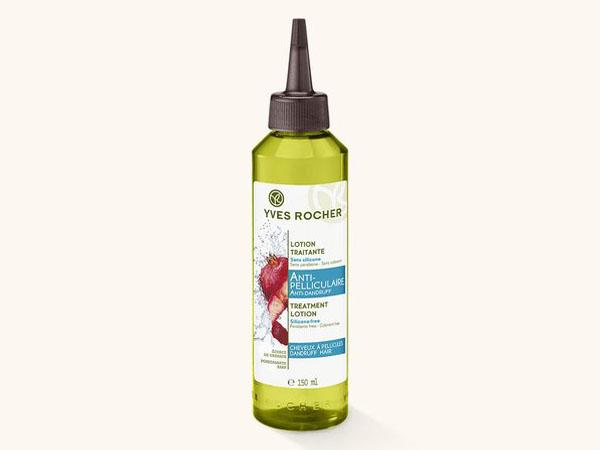
- Sulfuric ointment. One of the cheapest remedies against dry skin and white flakes on hair: only 35 rubles for 25 grams. However, it must be used carefully. Usually ointment is prescribed when other medications are powerless.
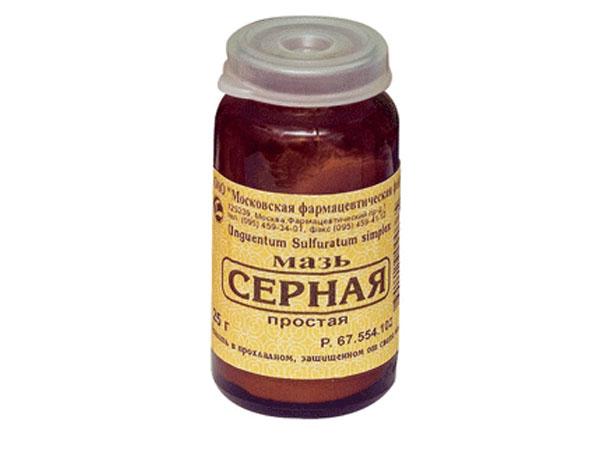
- Serum Emei (Siberian Health) . Suitable for eliminating dandruff and itching, normalizes the functioning of the sebaceous glands, and gives a feeling of freshness. It costs about 300 rubles for 0.25 liters.

Shampoos for dry seborrhea of the scalp:
- Losterine naftalan. Fights itching, dryness and irritation of the skin, dandruff. Contains Sophora japonica and burdock extract, almond, sunflower and linseed oils, which additionally care for hair, soften and moisturize the dermis. The shampoo has antifungal and antimicrobial effects. A bottle of 150 milliliters costs about 730 rubles.
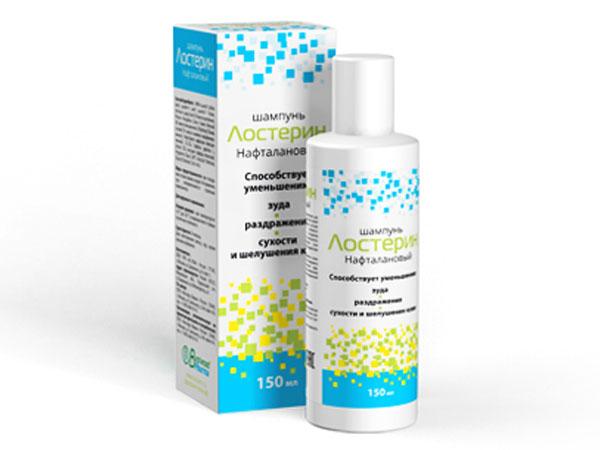
- Psoril. Salicylic and Zinc-Balance shampoos are suitable for treating dry dandruff. They contain natural extracts of chamomile and burdock root, which care for hair, strengthen it and get rid of white flakes. Also, depending on the product, you will find in the list of ingredients salicylic acid, zinc, climbazole, menthol, citric acid and other components that eliminate fungus and have an exfoliating effect. Shampoos soothe the scalp and normalize the functioning of the sebaceous glands. Price is approximately 300 rubles for Zinc-Balance and about 470 for Salicylic. The volume of the bottles is the same: 150 milliliters.
What is seborrhea?
To understand what seborrheic dermatitis is, you definitely need to understand its clinic. The mechanism of the disease consists of the following points: inflammation of the epidermis, formation of scales, increased fat content. Moreover, the composition of the secretion of the sebaceous glands differs from normal. Linoleic acid is produced in small quantities, Ph shifts to the acidic side. This weakens local immunity and allows microorganisms and fungi that previously did not cause harm to become active. More often than others, a conditionally pathogenic fungus called Pityrosporum Ovale causes harm; under its influence, seborrhea on the head becomes chronic.
Another option for the development of the disease is thinning of the scalp, drying out and a significant decrease in resistance to microtrauma. This happens when the function of the sebaceous glands is abnormally low.
Seborrhea of the head develops for the following reasons:
- Decreased immunity.
- Disturbances in the functioning of the endocrine system, in particular, diabetes mellitus, hormonally active pituitary tumor, weakened ovarian function.
- Chronic stress and fatigue.
- Inflammatory diseases of the gastrointestinal tract, in which the absorption of necessary vitamins and microelements occurs in small quantities.
- Insufficient intake of nutrients from food, as well as abuse of sweets, salty and spicy foods.
- Failure to comply with basic hygiene rules (cosmetics containing a large proportion of alcohol, aggressive hair coloring, too frequent hair washing).
- Heredity (often the abnormal structure of the sebaceous glands is passed on from parents).
- Poor environmental conditions.
- Oncological pathologies of the testicles in men.
There is a conditionally benign variant of the course of the disease. It occurs due to natural hormonal changes.
Signs of seborrheic dermatitis are observed in a child entering puberty, in pregnant women, as well as in women at the beginning of menopause. All this is transitory in nature.
Symptoms
All symptoms directly depend on the type of sebum secretion. The most common form is oily seborrhea. The fat can be thick or liquid in consistency, and the skin itself resembles the peel of an orange. The main indicator is thick dandruff in large quantities. Skin flakes separate at an accelerated pace, stick together and form flakes. Hair falls out, becomes thin, and looks like fluff.
Dry seborrhea, on the contrary, is due to a clear lack of fat in the pores. Clear signs of flaking are visible, dandruff is very fine, unlike oily seborrhea. Red or pink spots form and unbearable itching occurs. Immediately after washing your hair, a feeling of tightness remains for several hours. Patients often note a burning sensation when coming into contact with aggressive cosmetics and hair dyes. The structure of the hair also suffers: thinning and separation of the hair shaft occurs, and the hair “splits.”
When oily and dry dermatitis are combined on different parts of the head, we are talking about a mixed form of the disease. How to treat seborrhea with a mixed course is a big question for every doctor.
In cases of infection, the dermatologist diagnoses seborrheic eczema or dermatitis. Treatment of these pathologies requires a special approach.
This pathology is not uncommon in infants. After 3 months of age, the sebaceous glands begin to actively secrete. Outwardly, it looks like this: on the child’s head, usually in the upper part near the crown, lesions of various diameters form. These areas are covered with dense crusts and greasy scales. Popularly it is called lep or gneiss.
Parents must remember that the disease cannot be predicted or prevented. Adequate care does not guarantee the absence of disease. As soon as the first manifestations are visible, you need to treat the affected areas with hypoallergenic oil, after an hour, bathe the baby, and then very carefully comb the head. Your doctor should tell you how to treat seborrhea in a baby.
Traditional treatment for scalp seborrhea
A rather difficult dilemma is how to cure seborrhea on the head using modern drugs. Moreover, it is important not to cause even more harm. Based on the reasons, first of all you need to get rid of the underlying pathology, and only then block the symptoms of seborrhea. It is recommended to consult an endocrinologist, gynecologist or urologist, neurologist and trichologist (dermatologist). The doctor will prescribe the necessary examinations and treatment. Taking medications on your own initiative or on the advice of friends is highly discouraged.
Treatment of seborrhea of the head is best started with activities that are feasible for each person - proper nutrition. It is not recommended to use:
- Sweets in any form: cakes, pastries, sweets, honey, jam, as carbohydrates contribute to the nutrition and proliferation of fungi.
- Sweet baked goods.
- Semolina porridge, pasta.
- Fast food, spicy, salty dishes (negatively affect absorption in the intestine).
- Fatty meat and lard.
- Fresh or boiled fruits and vegetables.
- Dietary meat.
- Fermented milk products (whole milk is contraindicated).
- Cereals.
- Drink at least 1.5–2 liters of fluid per day to remove toxins from the body.
It is important to form the right habits so that after the symptoms disappear, they do not provoke a rapid return.
Ointments and tablets
Treatment of seborrheic dermatitis on the head with pharmaceutical drugs is usually quite long-term. The average duration is 2 months. After which the doctor prescribes repeated examinations and decides whether to continue or discontinue therapy.
- Antifungal drugs designed to reduce the activity or destroy fungi (Bifonazole, Ketoconazole). May be included in ointments.
- Vitamins in the form of complexes, especially for hair loss or simply to saturate the body (especially when the intake is low from food).
- Brewer's yeast tablets - prevent brittle hair and nails.
- Kombutek, Pyrogenal - biogenic medicines to improve blood circulation and accelerate metabolism in tissues.
- Shampoos with various compositions.
Ointments are rightfully presented as the best and most common remedies for seborrheic dermatitis on the head.
Salicylic ointment has an alcohol base. Its main task is to block the secretion of the sebaceous glands. Indicated for oily seborrhea, it has a drying effect. It should be used three times a day. Often causes burning and rash on the skin. Prohibited for use by children under 16 years of age.
Mycozoral is a fungal remedy based on ketoconazole. In addition, it may be active against some bacteria. Has a quick effect. Apply for a month, usually 2 times a day. Mycozoral has virtually no contraindications and is allowed even for pregnant women. Contraindicated only in case of wounded skin lesions or allergies to components.
One of the best antiseptic medicines for topical use is Zinc ointment. Strengthens natural defense mechanisms. Used twice a week. It is acceptable to use Zinc ointment when caring for babies.
Remedy for dry seborrhea – Sulfur ointment. Apply before bed, daily, repeat throughout the week. This is followed by a break for 1 day and the head is treated with anti-fungal shampoo.
Mixed seborrhea can be treated with Tar ointment. Apply once a week, duration up to 3 months. After application, 10 minutes later you can wash your hair without shampoo. Actively fights itching and flaking, alleviates the patient's condition.
It is difficult to imagine treating scalp seborrhea without shampoos. The following options are available:
Their medicinal properties are varied and determined by the presence of active substances:
With their help, the symptoms subside quite easily, and the treatment of seborrheic dermatitis of the scalp proceeds faster. The number of fungi decreases, they will no longer be able to receive nutrients and reproduce. Sebum is secreted in smaller quantities, and the scales are mechanically washed away, which creates a favorable visual impression and helps to avoid psychological problems.
Treatment
Treatment of the disease consists of:
- taking prescribed medications;
- diets;
- treatment with vitamins;
- proper care of the scalp and hair;
- the use of specialized shampoos with an antifungal effect.
Taking medications
- It is necessary to begin therapy by increasing the body's immunity. If the immune system is weakened, the treatment will be ineffective.
- In particularly severe stages of the disease, hormone therapy is prescribed to restore hormonal balance;
- They also take medications to treat and restore the visceral nervous system;
- Vitamin therapy – you should take vitamins from different groups;
- Use of medications containing sulfur and zinc;
- Sulfur ointment, which must be rubbed into the skin for seven to ten days, is considered very effective.
Special diet
A patient with dry seborrhea must avoid fatty foods, spicy and highly salty foods. You should not rely on animal fats and canned food. The foods doctors recommend are seasonal fruits and vegetables rich in vitamins, oatmeal, chicken eggs and dairy products.
Folk recipes
- You can treat the disease with onions. First you need to squeeze out one tablespoon of onion juice, add two tablespoons of castor oil, mix with two tablespoons of vodka. Rub in half an hour before washing your hair. Don't overdo it with oil! This may make the situation worse.
- Nettle helps a lot, as it has many beneficial properties. She had her hair rinsed at all times to make it stronger and shinier. You will need dry nettle leaves and water. Heat water to a boil, add a pinch of nettle. Let the broth brew. Extract the nettle before applying the mask.
- Buy a regular calendula tincture at the pharmacy and mix it with burdock oil. Rub into skin before shampooing.
- You can also mix castor, burdock or sea buckthorn oil with egg yolk until smooth and rub into your hair forty minutes before washing.
- Use infusions of chamomile and sage. They eliminate itching, dandruff and moisturize the skin.
- You can make a mask from egg yolks, lemon juice and oil. It should be applied for 30 minutes.
Changing shampoo
Three shampoos recommended for patients with dry seborrhea:
- Friderm-plus. Apply and rinse off like regular shampoo, you just need to leave it on for a few minutes after application. Suitable for children.
- Algopix. The composition includes tar, green algae extract in alcohol, and salicylic alcohol.
- Sebopirox 911. Treats fungus, dandruff and soothes the scalp. Contains tar and glycerin, which helps moisturize the skin.
Folk remedies
The actual question is how to get rid of seborrhea on the head using traditional medicine. The main thing to remember: treatment at home is only part of complex therapy. Before you start using anything, it is important to be examined and get an accurate diagnosis, otherwise you can cause irreparable harm, including irreversible baldness.
Examples of simple recipes for oily seborrhea:
- Onion juice and boiled chilled water are mixed in a 1:2 ratio. Rub in the composition every time before washing your hair. Course duration is 4 months.
- Calendula helps well against seborrhea of the scalp. You need to pour 1 tablespoon of flowers with 2 cups of boiling water. Leave for 30 minutes. Rub in every day. Prevents hair loss and relieves itching.
- Hair mask: 2 egg yolks, 1 tablespoon olive oil, lemon juice (1/2 lemon). The ingredients must be mixed and rubbed into the scalp for 40 minutes. Wrap up warmly. Wash off with simple shampoo as during normal washing. Repeat the procedure every 3 days.
- Seborrhea of the scalp can be treated with oak bark. Pour the dry substance into boiling water at a ratio of 1:5, boil for another 20 minutes, add honey. Use 2 times a week for 2 months.
- Propolis extract has a medicinal effect. It is applied to the scalp every other day, forms a film that needs to be removed in the morning (preferably using a swab with alcohol). Carry out 30 procedures, followed by a 3-month break.
You can fight dry seborrhea using the following means:
- Grind dry nettle leaves in the amount of 2 tablespoons, add 300 ml of boiling water, wait 2 hours. Apply every day.
- Seborrheic dermatitis on the head can also be treated with calendula. It must be mixed in a 1:1 ratio with castor oil and rubbed into the hair every other day.
- Mix natural henna powder with water and rich cream (1:2:7). It is acceptable to treat the scalp at home twice a week. The course consists of 12 procedures.
- Pour boiling water over dry burdock roots at the rate of 300 ml per 2 tablespoons of dry matter. Boil, strain, add 50 g of melted fat, preferably pork fat. Boil in a water bath for another 2 hours. Rub in 2 times a week for 3 months.
Knowing the causes of the disease, symptoms, and medications for the treatment of seborrhea of the scalp, you can easily overcome this unpleasant condition. After undergoing a consultation and receiving instructions from the attending physician on how to cure seborrheic dermatitis, each person will find something that will help him.
Doctor
Anti-dandruff masks for oily hair at home
- Lemon juice
Lemon juice is an excellent remedy for oily hair with dandruff. Dilute lemon juice half and half with water and rub into scalp. Leave for 15-20 minutes and wash your hair as usual. Use this mask 2 times a week for a month.
- Tincture of calendula
Rub calendula alcohol tincture into your scalp, after half an hour you can wash your hair. The tincture fights the fungus that causes dandruff and strengthens the hair. You can mix calendula tincture with castor or burdock oil. Apply for half an hour, then rinse with shampoo.
– Simple anti-dandruff mask with aloe
To use aloe juice, break off a few of the bottom leaves of the aloe plant and refrigerate it for a few days. After this, aloe juice can be rubbed into the scalp without rinsing. Aloe promotes both general skin health and hydration, and most importantly eliminates oily dandruff.
– Nettle
Boil 50 grams of nettle in 500 ml of water for 10-15 minutes. Squeeze out the herb and apply the paste to the scalp for 1.5-2 hours, then wash your hair, dry your hair and rinse it with the remaining nettle infusion. You can use this mask 2 times a week.
– Castor oil, honey, lemon juice, aloe juice, mayonnaise
Mix all ingredients in equal proportions, the amount depends on the length of the hair, on average - 1 teaspoon of each component. Rub the mask into your scalp and leave under plastic and a towel for an hour. Rinse with shampoo and rinse with water and lemon juice. Use the mask 1-2 times a week.
– Oil masks with essential oils
Any oils can be used as base oils. For oily hair, almond oil, calendula oil or St. John's wort oil are recommended. You can add a few drops of essential oil of tea tree, eucalyptus, lavender, juniper, and cypress to one tablespoon of base oil. Apply to scalp for half an hour.
– Green clay mask
Green clay gives an excellent effect for oily hair prone to dandruff. Dilute 2 tablespoons of green clay with a decoction of herbs to a thick consistency, add 1 egg yolk and 1 tablespoon of apple cider vinegar. Cover your head with plastic and a towel and leave for 20-40 minutes. The mixture should be washed off thoroughly with warm water and shampoo.
Be sure to use a conditioner so that your hair does not remain a little stiff after such a mask. You can rinse your hair with the remnants of the herbal decoction that was used to dilute the clay.
– Scalp masks with birch tar
You can use birch tar as a radical remedy for dandruff and itching at home. If you are not afraid of this remedy and you dare to try it, then the result will come after the first mask, and the effect will last a long time. After all, tar has anti-inflammatory and antifungal effects.
It makes sense to use this mask if you have oily hair and dandruff is not typical for you, but suddenly appeared one day out of the blue. In this case, dandruff is most likely caused by a fungus, and tar helps to quickly cure it.
Read more about tar, tar shampoos and masks in the article Tar soap - a remedy for dandruff>>>
Great ideas and tips for hair care for dandruff:
Interesting articles:
Loading…
